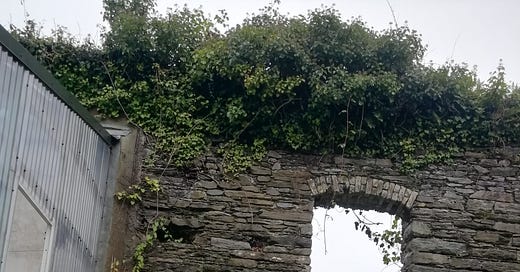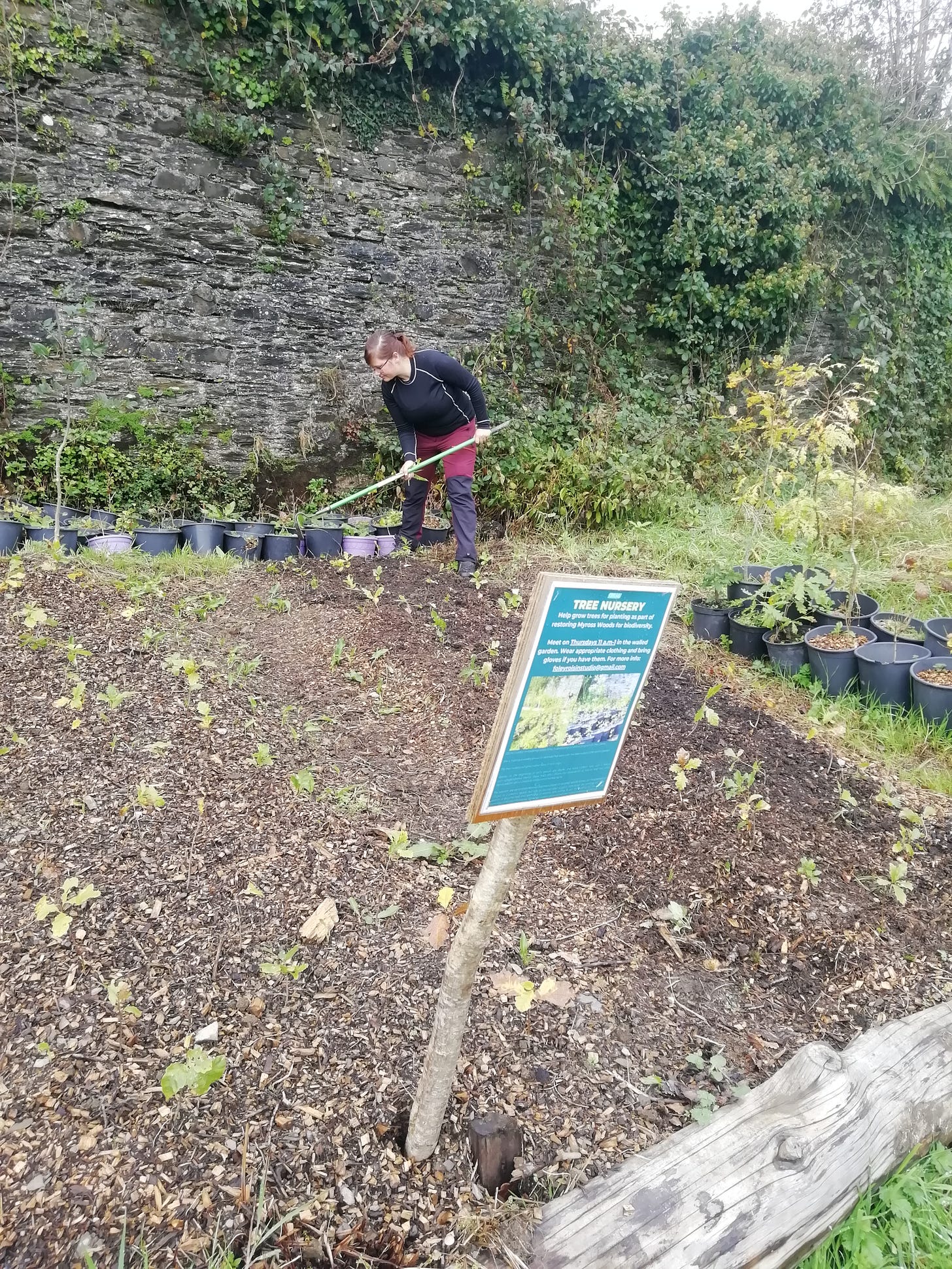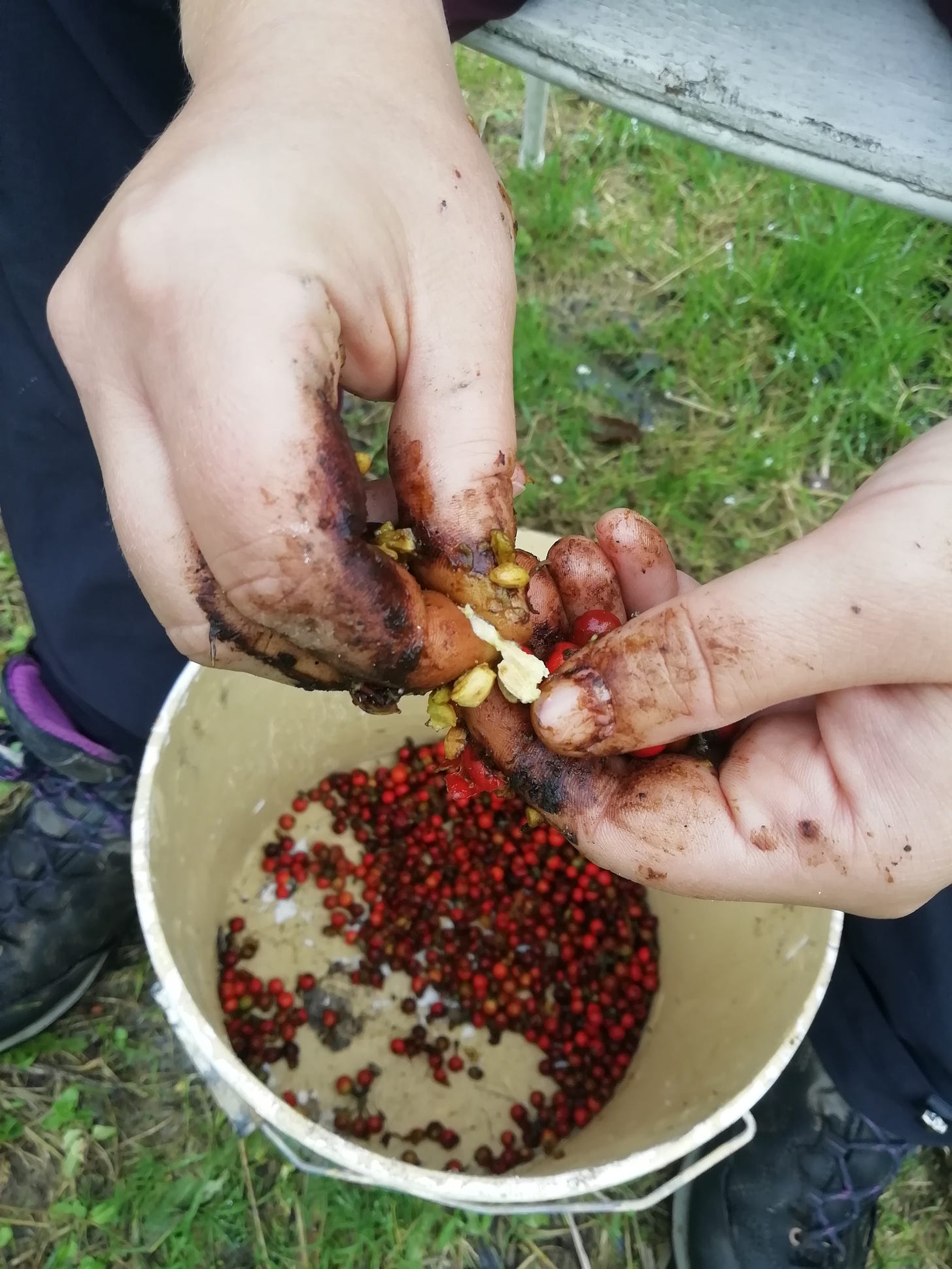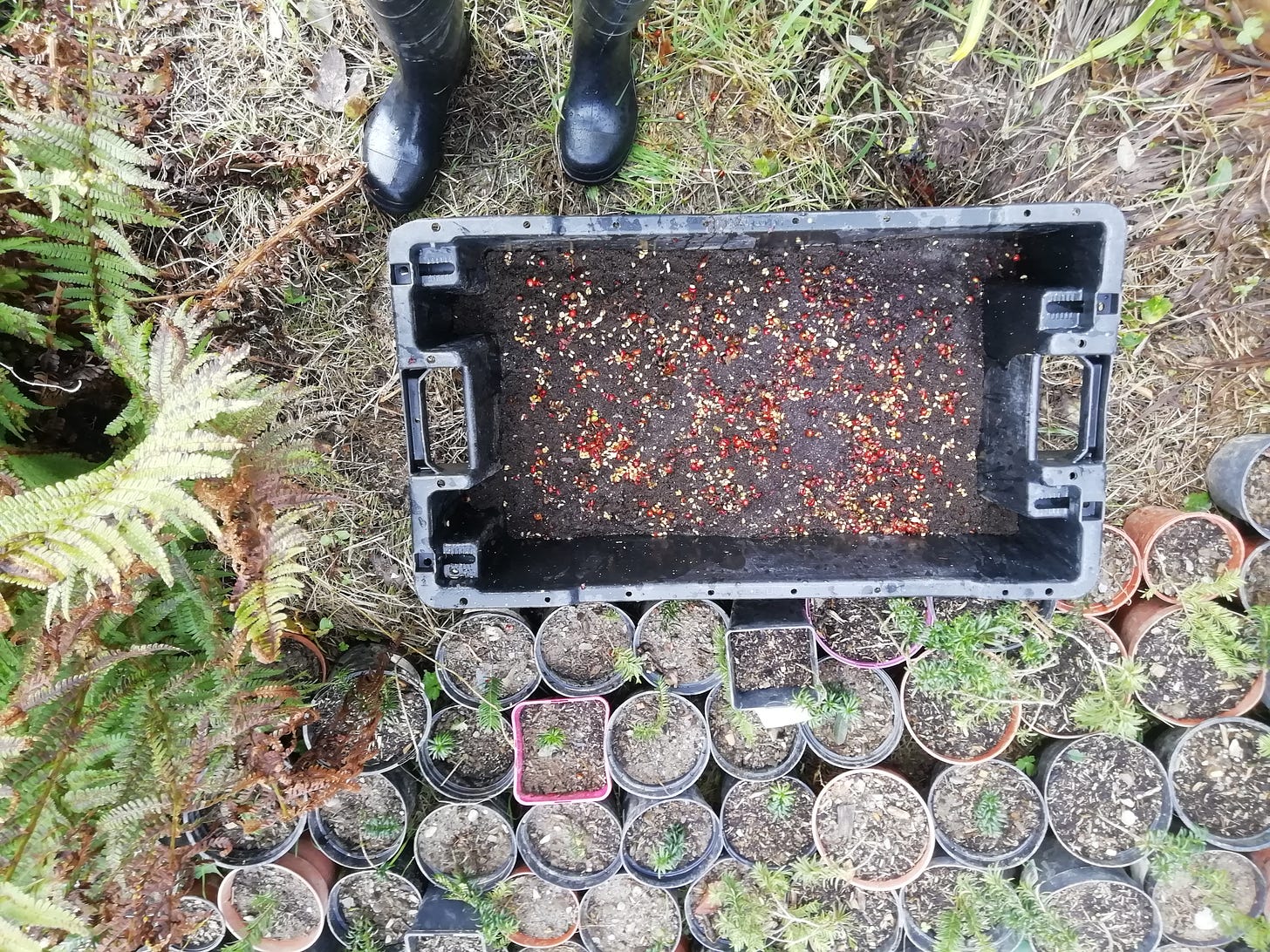Thursday morning was the aftermath of an extraordinary rain storm.
The road that separates the estuary and woods on approach to the house didn’t have much in the way of sitting water. The pond underneath the sandmartin wall was level. Tunnel wood had a bit of spillage but nothing to be concerned about. Everything seemed battered but lush. I had been taking photos of some willow that have taken up residence along the side of this road this past week. Much of that area was flattened after storm Ophelia, and the willow moved in. They do a great job at holding water.
It was early and their wasn’t much activity up at the house. I printed out some copies of the essay On Watermelon from Rebecca Tamás’ Strangers. It had occurred to me to print this text before but the context never seemed quiet right. Last week Rachel and myself began talking about the commons and I had read an open call which featured a reference to the Diggers. To offer this text seemed appropriate to continue the conversation about imagining a shared landscape (human and non-human). It’s a long read for the nursery sessions (18 pages). It is a text full of entanglements from 1649 when the Diggers began to cultivate ground under their Christian proto-communist ideology to the present day. Its a read that meshes too many movements to name and somehow links them all, drawing the focus of the anthropocene away from its devastating material effects, engaging with historic social structures and associated responsive movements. Tamás identifies these structures as a form of mental anthropocene which she traces back to events such as the Digger movement as a response to the displacement of people from common land. So why not read about collective land movements when working in a community garden that is growing trees from local seed for the local forest?
Michi hoed an oak bed, she hadn’t used a hoe before so it was really satisfying to watch her enjoy the process. I like hoeing as a way to check in with the beds and the health of what’s growing. You see how the soil is and maybe what it might need. Often enough your accompanied by a robin, they love sussing the ground for worms in disturbed ground. A human companion species.
We went over near the grow house and set ourselves up on a chair and crate and began to work the holly berries Rachel and myself had collected the former week. As we didn’t have a vast amount I decided we should do this by hand. The weather was fair and it would be a great opportunity to just sit, natter and take in our surroundings while being productive. Above Michi the last flowers of the Irish ivy adorned the tympanum of a former door in the stone wall. The bees worked purposefully, in sonic response droning as opposed to humming or buzzing on this October day.
We squished the berries removing the seed from the fruit. And spent an hour chatting. Our hands became red as we talked personal and family histories (me being from the Republic of Ireland and Michi being from the former East Germany). We talked about invasive species and the balance that needs to be maintained in order to prevent devastation.
The seeds were all poured into a bucket and water was added. The viable seed sank and unviable floated. I scraped off the floating seed and sowed on top of a mix of seed compost and sand. Then I covered with the same mix. Lets see how they do!
It might take 2 years and their are no guarantees the seed will germinate. 2 years is a commitment and I think about the 2 years in between. What other work and what other stories can we begin to tell about the holly at Myross while its working away with its unmeasurable and invisible processes? It is a sort of in between magic this stratification process. So how might we translate that to creative process? On the other hand, a couple of oaks I had left in my pocket sprouted overnight. And these two being companion species, the main players in our native forests. They are so different
Next week we will be getting the nursery ready for a demo at the Myross market. One of my permie friends Hazel will have a rolling tree seed saving workshop. I’ve been busy getting donations of supplies from really generous businesses. The workshop with be all day October 29th (11-4ish). If we can collect some more seeds for the workshop it’d be great. Other jobs will be drilling holes in fish boxes and making signs.
The workshop will give the nursery an extra push as we come to the end of seed saving season. We have received a donation of 10 fish boxes from Glenmar in Union Hall and I am hoping to fill each one with seed as part of the demo.
The following week we are hoping to do a leaf mulch making workshop as part of the nursery gathering (11-1) on November 2nd. More details to come.
All the best,
Róisín








